Figures & data
Figure 1. Effect of Cd on NRK-52E cell morphology and apoptosis. (a) High-content imaging and analysis of Cd damage to cells (40×). (b) the expression of apoptosis-related proteins. (c) the gray value analysis results of protein bands. Statistical significance between samples was evaluated by one-way ANOVA, followed by LSD test. Groups marked with different letters, the difference between them was significant (P < 0.05)
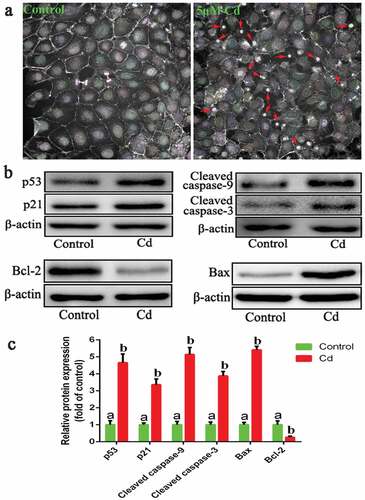
Figure 2. Acquisition of G0-phase NRK-52E cells and the effect of Cd on its apoptosis and necrosis rates. (a) The effect of serum starvation on cell cycle distribution. (b) Western blotting was used to detect the expression of cyclins associated with G0 phase. (c) The effect of Cd on the apoptosis and necrosis rates of G0-phase-synchronized cells was detected by flow cytometry. Statistical significance between samples was evaluated by one-way ANOVA, followed by LSD test. Groups marked with different letters, the difference between them was significant (P < 0.05)
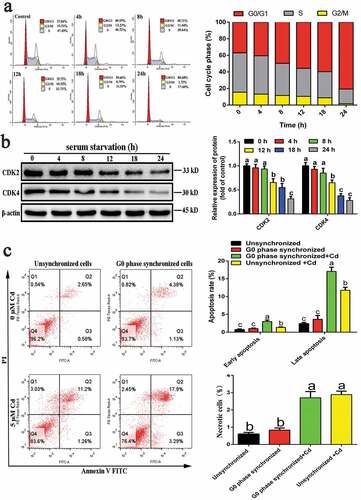
Figure 3. Acquisition of G1-phase NRK-52E cells and the effect of Cd on its apoptosis and necrosis rates. (a) Flow cytometry was used to detect the cell cycle distribution of demecolcine-treated and restored normal culture cells. (b) Western blotting was used to detect the expression of cyclins associated with G1 phase. (c) The effect of Cd on the apoptosis and necrosis rates of G1-phase-synchronized cells was detected by flow cytometry. Statistical significance between samples was evaluated by one-way ANOVA, followed by LSD test. Groups marked with different letters, the difference between them was significant (P < 0.05)
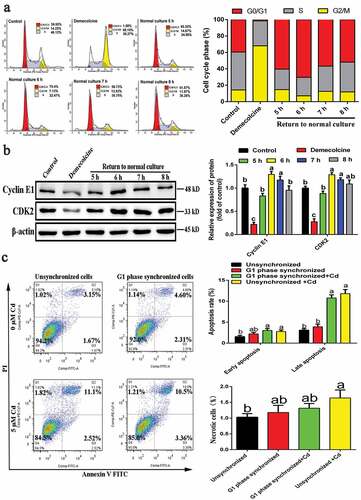
Figure 4. Acquisition of S-phase NRK-52E cells and the effect of Cd on its apoptosis and necrosis rates. (a) Flow cytometry was used to detect cell cycle distribution after thymidine treatment. (b) Western blotting was used to detect the expression of cyclins associated with S phase. (c) The effect of Cd on the apoptosis and necrosis rates of S-phase-synchronized cells was detected by flow cytometry. Statistical significance between samples was evaluated by one-way ANOVA, followed by LSD test. Groups marked with different letters, the difference between them was significant (P < 0.05)
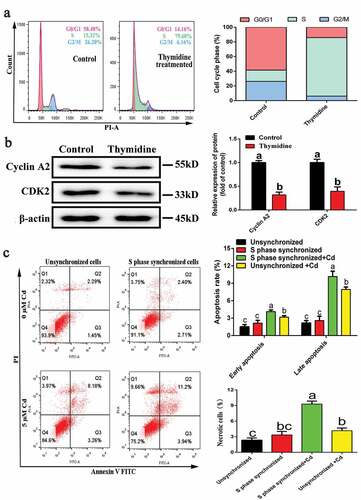
Figure 5. Acquisition of M-phase NRK-52E cells and the effect of Cd on its apoptosis and necrosis rates. (a) Flow cytometry was used to detect cell cycle distribution after demecolcine treatment. (b) Western blotting was used to detect the expression of cyclins associated with M phase. (c) The effect of Cd on the apoptosis and necrosis rates of M-phase-synchronized cells was detected by flow cytometry. Statistical significance between samples was evaluated by one-way ANOVA, followed by LSD test. Groups marked with different letters, the difference between them was significant (P < 0.05)
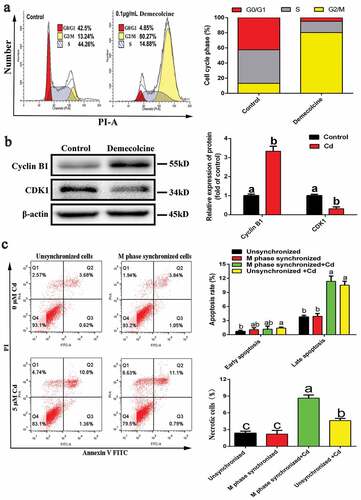
Table 1. Sensitivity of cells to Cd at different phases
